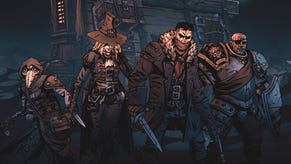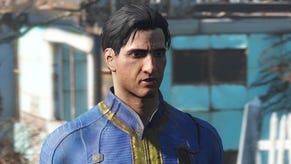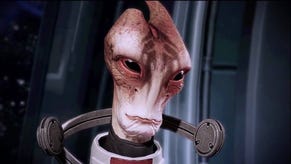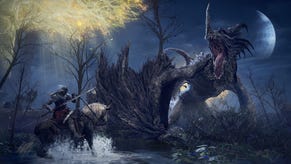New Tomb Raider animation from Angel of Darkness writer covers lost period between fourth and sixth games
Pyramid scheme.
A new Tomb Raider animation canonically explains how Lara Croft survived the events between Tomb Raider: The Last Revelation and those of the series' sixth instalment, Angel of Darkness.
The Myth of El Hawa is written by Angel of Darkness scribe Murti Schofield, directed by veteran Tomb Raider fan Ash Kaprielov, and stars voice actress Jonell Elliott (who voiced Lara in several Tomb Raider games including Angel of Darkness and The Last Revelation).
As for The Myth of El Hawa itself, this is told through Lara's diary entries. These reveal how, following her fall into the collapsing temple of Horus at The Last Revelation's close, Lara struggled to make her way out alive. However, make her way out she did, and on the brink of death she was found by a shaman named Putai.
After reviving her with water and oils, Lara recalls how Putai brought her to the Bantiwa tribe - a group that Lara describes as her "desert family". This tribe was made up of mostly women who were skilled in combat, and as Lara continued her recovery, she was gradually accepted into the tribe as one of them. She learned to fight alongside them and acknowledges that the love and support she found with the tribe left her hesitant to return to her original life. Her diary states she needed time to "get perspective on what happened at the tombs and why no one had come searching for [her]", which her stay with the tribe allowed her to do.
One night during her time with the Bantiwa, the group were attacked by a rival tribe led by a "brute" named Scar. Lara managed to injure Scar in the proceeding battle, but before she could finish the job he was carried away by his men. Regardless, her efforts during the battle went on to earn Lara the tribal name of 'El Hawa', or 'The Desert Wind'. And, from this moment, the legend of El Hawa was born. The Bantiwa tribe became renowned for its protection by an "angel" robed in blue.
Despite Lara's deep love for her "adoptive family", she eventually felt she needed to return to England. Lara travelled to the coast of Africa with Putai and made her way home. But, tragically, following her return, Lara received word the Bantiwa tribe had been slaughtered in her absence. This left Lara feeling "desolate" and worse than she did following her ordeals in the tomb of Horus.
With a new resolve, Lara began preparing to make her way back to the desert in order to find out what had happened to the tribe and its people. However, a certain call from Von Croy stopped her in her tracks, and she decided to head to Paris on her way back to Africa. Thus, the events of Angel of Darkness began.
You can see the full animation of The Legend of El Hawa for yourself below.
These revelations finally give Lara's survival between the events of The Last Revelation and Angel of Darkness a bit more gravitas. That is not to say that Lara isn't a character of both incredible physical and mental strength - she certainly has both those in spades. But, at the end of the day she is still a human, with human mortality and foibles. After all these years, it is really nice to not only see this period in Lara's life addressed, but also elaborated upon.
Not that this is the first time we have been given a slither of insight into Lara's impressive survival between games, of course. Fans who have followed Tomb Raider lore over the years will already be aware of some elements told within this new story, as Schofield has previously discussed the character of Putai and the legend of El Hawa, albeit in much less detail.
Back in 2016, the official Tomb Raider YouTube channel released a deleted scene from Angel of Darkness. This scene showed a very brief flashback of Lara meeting the mysterious shaman following the events of The Last Revelation. At this time, Scofield explained that Putai was:
"... A mentor figure in a way that Lara's more earthly mentors could not hope to operate. She was a shamanic link to all the mythical roots of the worlds that Lara had been adventuring in for the whole of her life."
Scofield went on to state: "What Putai would have been able to teach Lara was on a different, more refined, more elemental level than she had previously been able to perceive. And once Lara had begun to transform and understand her place in this mythical domain, she would find all kinds of otherwise inaccessible secrets opening up to her. She would be able to unlock the Portal of the Centuries."
You can see this deleted scene from Angel of Darkness below.
As for the future of the Tomb Raider series, Crystal Dynamics recently announced it had regained "control" of the IP following its sale by Square Enix to Embracer.
Meanwhile, earlier this year, it was announced that the next game in the Tomb Raider series will be made in Unreal Engine 5.
While official details about this upcoming release are still thin on the ground, a leak from an audition script for a role in the game told of Lara Croft leading a team of younger tomb raiders as she deals with the isolation of success.












